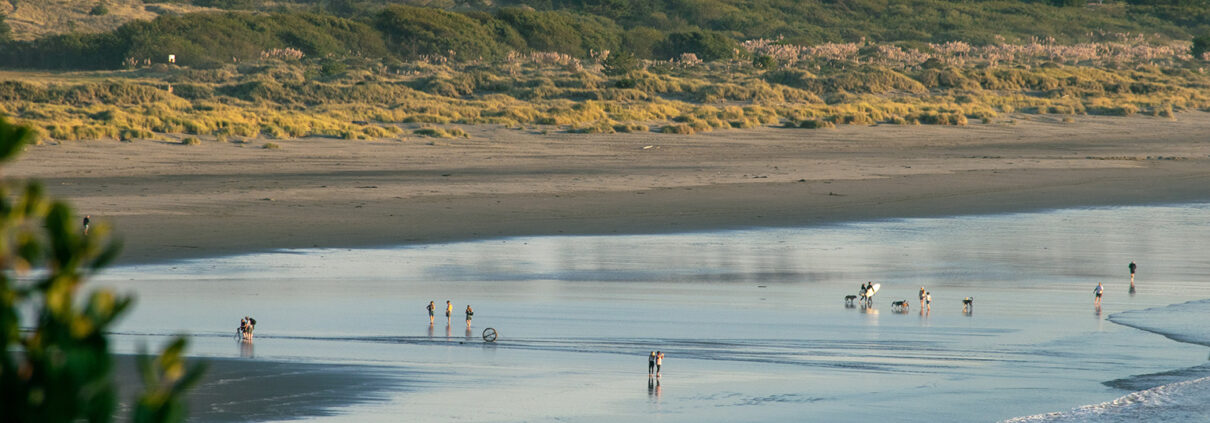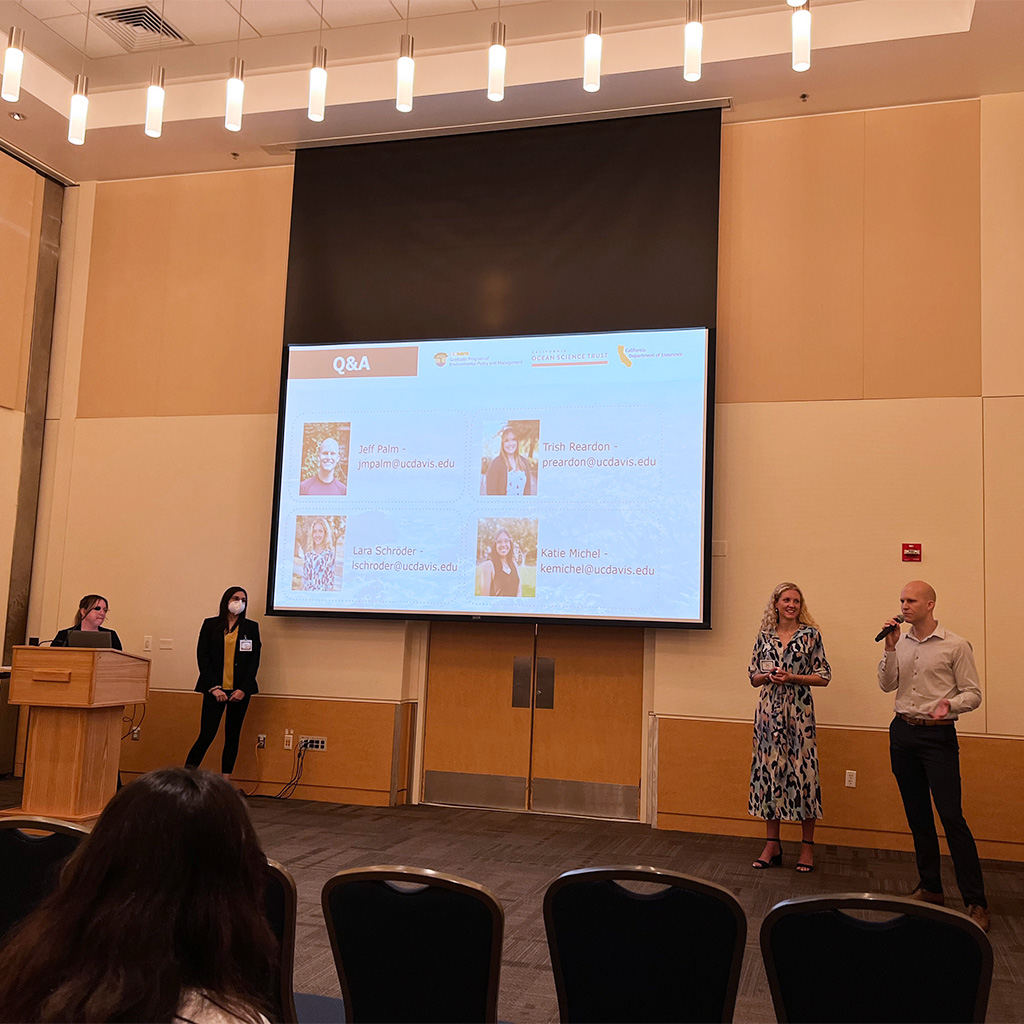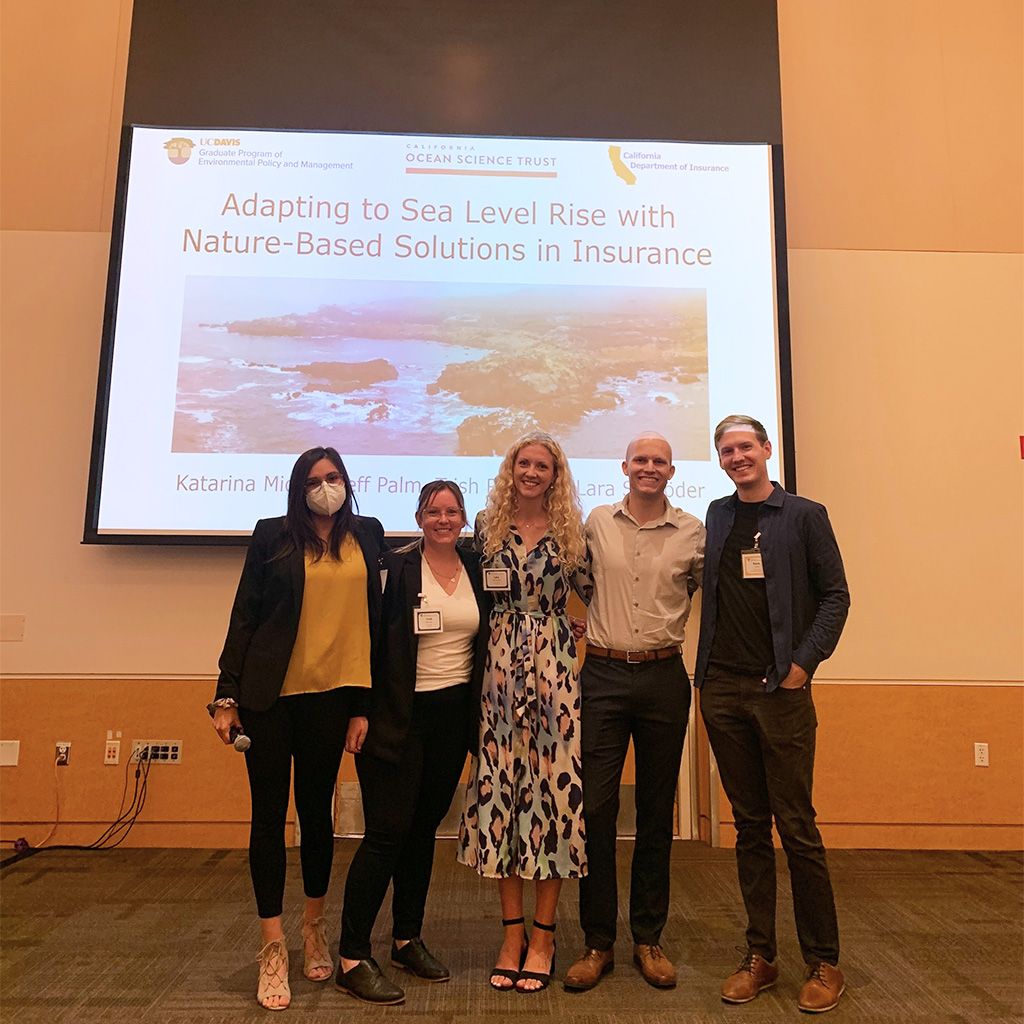How do you lower climate risk for communities? What are the mechanisms to fund risk mitigation? Who is responsible for building resilience now to a future risk?
These are the questions that scientists, practitioners, policymakers, stakeholders and the like are grappling with in California, especially as our coastlines experience a whiplash of climate change impacts, eroding our shorelines and flooding our most vulnerable communities. There is consensus that adapting to a changing climate now while mitigating against future climate-driven catastrophes will be critical for the health of ecosystems and livelihoods in California. It is this urgent need and understanding that’s led to a growing interest in the role of insurance as a risk management tool and rapid finance mechanism to accelerate coastal resilience through nature-based solutions.
At the start of 2023, OST and CDI teamed up with the Environmental Policy and Management program at UC Davis to work with a talented team of graduate students through a Policy Clinic to explore this nexus of insurance, nature, and coastal climate risk. Over the course of two academic quarters, the students applied their skills and interests to add science capacity and new analysis for how California may leverage this innovative climate solution.
The Policy Clinic conducted a global landscape analysis, synthesizing existing case studies and applying learnings to California’s unique coastal environment. The students then focused their efforts on a region in California with some of the greatest needs for climate mitigation and adaptation: Humboldt Bay. They interviewed a suite of experts, from coastal ecologists and adaptation specialists to market development and insurance professionals. By determining regional climate risks, they developed a framework and guide to building coastal resilience through various ‘resilience pathways’ which incorporate insurance products and policies, while also working with Humboldt’s natural infrastructure.
To learn more on this work and partnership, read the final deliverables from the Policy Clinic here:
A landscape review of nature-based solutions as an incentivization for insurance policy
Nature-based Solutions in Insurance: Resilience Pathways for Humboldt Bay, California






